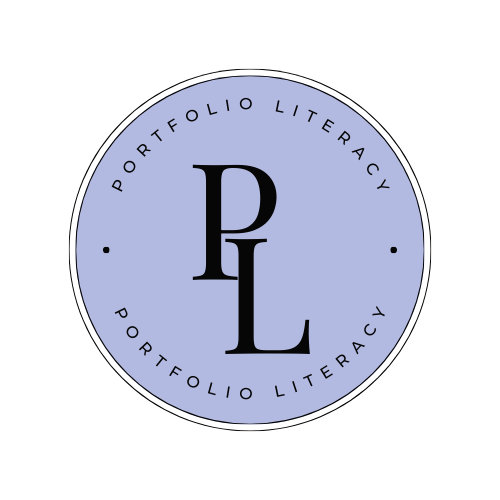Investing your money wisely is key to building wealth over time. Portfolio allocation is an important part of investing, it is deciding how to split your capital between different types of assets. The below portfolio allocation models are incredibly common and are good bases for how you may want to allocate your capital. However, your allocation should change with your goals and current financial position. If you need specific guidance to reach your goals, you should consult a financial advisor.

There are many ways to divide up your investments. Some methods are more popular than others. The five most common portfolio allocation models can help you make smart choices about where to put your money. Each model has its own approach to balancing risk and potential gains.
1) 60/40 Portfolio Allocation
The 60/40 portfolio is a classic investment strategy. It’s simple and easy to understand. You put 60% of your portfolio in stocks and 40% in bonds.
This portfolio allocation aims to balance growth and safety. Stocks can help your money grow over time. Bonds can provide steady income and protect against market drops. It’s often seen as a good starting point for many investors that can be adjusted based on your goals and risk tolerance.
One benefit of this approach is that it’s easy to rebalance. When stocks do well, you sell some and buy bonds. When bonds do well, you do the opposite. The 60/40 portfolio has faced some criticism in recent years, due to lower bond yields compared to the 1980s.
You can create a 60/40 portfolio with individual stocks and bonds. Or you can use index funds or ETFs for each part. This can make it even simpler to manage. Remember, no single strategy fits everyone.
Your ideal portfolio allocation depends on your age, goals, and comfort with risk. But the 60/40 portfolio offers a solid starting point for many investors.
2) Target Date Portfolio
Target date portfolios are designed to simplify investing for retirement. These portfolios automatically adjust their asset mix over time. They start out more aggressive when you’re younger and become more conservative as you approach retirement.
The goal is to match your investment strategy with your expected retirement date. For example, if you plan to retire in 2050, you might choose a 2050 target date fund.
In the early years, these portfolios typically have a higher percentage allocation to stocks. This aims to maximize growth potential. As you get closer to retirement, the portfolio shifts to include more bonds and cash.
This gradual shift is called a “glide path.” It helps protect your savings from market volatility as you near retirement. You don’t need to manually rebalance your investments.
Target date portfolios are often available in 401(k) plans and other retirement accounts. They can be a good choice if you want a hands-off approach to investing.
Keep in mind that target date portfolios may have higher fees than some other investment options. You should also check if the fund’s glide path aligns with your personal risk tolerance.
Remember, even though these portfolios adjust automatically, it’s still important to review your investments regularly. Your financial situation or goals may change over time and your portfolio may need more specificity for your financial situation.
3) Three-Fund Portfolio by Taylor Larimore
The Three-Fund Portfolio is a simple and effective investment strategy created by Taylor Larimore. It’s based on the idea that you can build a well-diversified portfolio with just three total market index funds.
This portfolio typically includes a U.S. stock market index fund, an international stock market index fund, and a U.S. bond market index fund. The exact portfolio allocation for each fund should vary based on your risk tolerance and investment goals.
The U.S. stock fund gives you exposure to the entire U.S. market. The international stock fund adds global diversification. The bond fund provides stability and income to your portfolio.
One of the main benefits of this approach is its simplicity. You don’t need to spend time picking individual stocks or constantly rebalancing your portfolio. This can save you time and reduce stress.
The 3 Fund Portfolio also tends to have low fees. Index funds usually have lower expense ratios than actively managed funds. This means you keep more of your returns over time.
Larimore argues that this strategy can outperform many investors with less risk. It provides broad diversification across thousands of securities, which helps protect against the risk of any single company or sector failing.
You can adjust the portfolio allocation as you age. Generally, you might increase your bond allocation as you get closer to retirement to reduce risk, while in your earlier years allocate more heavily to US stocks. This flexibility makes the 3 Fund Portfolio suitable for investors at different life stages.
A detailed post on the Three-Fund Portfolio can be read on the Bogleheads community site.
4) All Weather Portfolio by Ray Dalio

The All Weather Portfolio is a strategy created by Ray Dalio, founder of Bridgewater Associates. It aims to perform well in any economic environment.
The portfolio allocation looks like the following:
- 30% U.S. Stocks
- 40% Long-Term Treasury Bonds
- 15% Intermediate-Term Treasury Bonds
- 7.5% Commodities
- 7.5% Gold
You can use this approach to protect your investments from market swings. The idea is to have parts of your portfolio do well no matter what happens in the economy.
The All Weather portfolio allocation model focuses on long-term growth in any economic environment. It’s not about trying to predict market movements or economic shifts, it is about doing well no matter the health of the economy. You might find this approach helpful if you do not have the stomach for volatility.
Keep in mind that no investment strategy is perfect. The All Weather Portfolio may not always match the performance of more aggressive approaches in strong markets as it is only 30% stocks. Still, many investors appreciate its focus on stability and risk management. It can be a good option if you want to reduce stress about market fluctuations.
5) Permanent Portfolio by Harry Browne
The Permanent Portfolio is a simple investment strategy created by Harry Browne in the 1980s. It aims to protect your wealth in different economic conditions. The portfolio splits your capital equally among four asset classes. The portfolio allocation is 25% to each stocks, long-term government bonds, gold, and cash. The idea is that at least one of these assets will do well no matter what happens in the economy, similarly to the All Weather Portfolio.
Stocks help your money grow when the economy is strong. Bonds provide steady income and can increase in value during economic troubles. Gold acts as a hedge against inflation and market uncertainty. Cash keeps part of your portfolio safe and readily available.
The Permanent Portfolio is designed to be low maintenance. You don’t need to watch the market closely or make frequent changes, it is assumed you rebalance this portfolio once a year to adjust due to the portfolio performance. It aims to provide growth with less risk than other strategies as there is only a 25% allocation to stocks.
This approach may suit you if you’re looking for a way to protect your wealth in different economic scenarios like the All Weather portfolio, however, provides less opportunity for growth as a 25% allocation to Cash is rather significant and is a very risk averse position.
